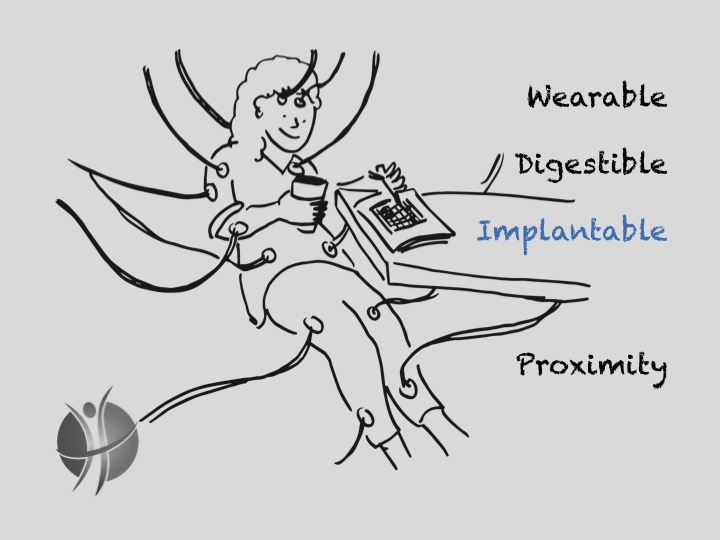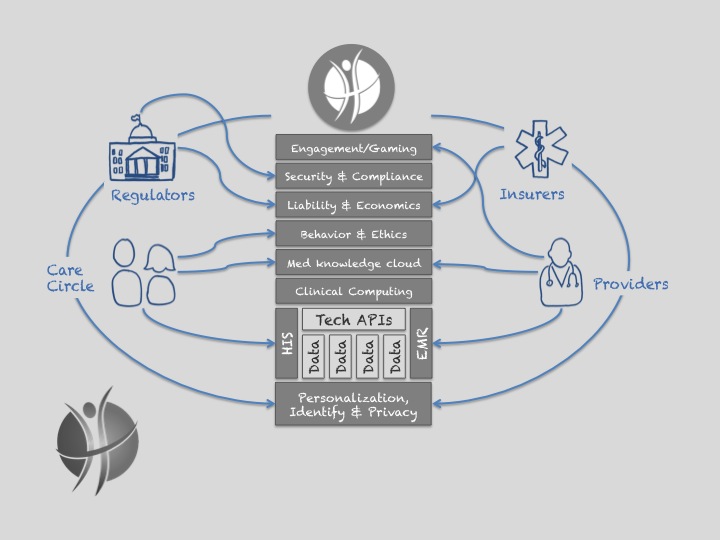
How a pound of prevention could soon render our current health care system irrelevant.
When was the last time you saw someone on the side of the road with an alternator burnt out or a fried carburetor? Not lately, since cars have long been instrumented with sensors telling us how specific parts are performing, with the data from these sensors alerting us that preventative action is required in order to sidestep automotive "trauma." Fix-it shops have largely been replaced by preventative maintenance service centers.
Like cars experienced, we are at a crossroads of a historic inflection point where human health care could tip from a focus on cure to one on prevention. At the risk of sounding like a Miss America contestant describing her platform to "change the world," that's precisely the kind of radical paradigm shift I'm proposing.
I'm talking about third-dimension thinking movements that take success beyond money and power to wellness in the personal realm, progress beyond people/profits to planet in the commercial realm, and a movement beyond private and public health care/delivery to preventative health ownership in the health realm. In studying the industrial redesign of the health care and delivery ecosystem, I've begun to see the tremors of a global movement from traditional, cure-based health care/delivery to preventative health.
What exactly is preventative health?
Preventative health can be described, in the words of scientist-inventor Daniel Kraft, M.D., as "stage zero" of a disease -- the ability to use information and technology to better predict and potentially, avoid traumatic health/disease events. Many debate there is nothing new here, and in a narrow sense, this is true. "An apple a day" is the hallmark of the prevention philosophy. Consider an exponential magnification of that precept, one that may perhaps only best be seen with the benefit of hindsight. Fast-forward five years and look back: You'll see that 2014 marked a historic point of inflection for the preventative health transformation and the beginning of a brave new world view of health care.
What is driving the point of inflection?
In order for mankind to get ahead of the need to cure disease, we need to be able to predict health trauma. This foretelling should ideally be informed by our behavior (eating well, exercising) and our genetics (hereditary strains, the raw genetic information) but the incidence of disease shows that such general awareness falls far short when it comes to taking ownership of our health. What is triggering an impactful prediction of health trauma and the movement of preventative health third dimension thinking is a real-time, steady flow of health information.
We at are at the tipping point of how much health information we have, how it is delivered to us, and how we can use it.
Today, there are countless lab-in-a-box type devices, such as pregnancy tests, blood pressure tests, and other simple devices measuring static, "single point in time" health indicators. We have scores of analog-to-digital devices such as the wear-ables, patches, implants, and others that measure the "stream" of health indicators, converting the body's analog physiology to digital health information. Health information has gone from a "system of record design" to a "system of engagement design." This means that health information is finally no longer something collected, measured, and locked away as a medical "record," never to be looked at again. Health information is collected, streamed, and actively served to us to effect preventative behavior to act. Much like a GPS, health information should tell us where to turn.
Although the prevention industry is just being birthed, I already know more about my body's temperature, sleep pattern, steps taken, calories burnt, blood pressure, and the ph balance of my saliva. In just a few years, I'm confident there will be the ability to synthesize all of this information and much more and say, for example:
Richie in the last 90 days, based on the listening systems of your body and your HIPPA preferences, we have seen via clinical cognitive computing, indicators suggesting your likelihood of getting a heart attack by 50 has increased 5 percent over expected levels. We reached out to your insurance company and secured a microscopic payment to a medical wisdom cloud of doctors and medical school students (think taskrabbit.com for medical professionals) who confirmed the machine findings. Here is a coupon code, if you go to any of the three doctors in your area and take the following two tests in the next 90 days, this coupon code will waive your co-pay, and lower your health insurance by 10 percent for the next year. With the tests and changes recommended, you can reverse this temporary deterioration before it is permanent. Proceed.
So our health data can now "activate" us.
The mere knowledge that our habits could impact our wellness and our genetic predisposition could dictate our propensity and longevity did not engage nearly enough of us to act. It is the use of information and technology to deliver engaging health information (think psychologically designed messages targeted to us) about ourselves that will trigger the ownership and intent of behavioral changes leading to the beginning of a preventative health revolution industry.
Why 2014, and where is the progress?
The future is now. Technology is knocking loudly on the door, breaking into the halls of health care. Movements like the Quantified Self, organizations exploring the human API (application programming interface), platforms and inventions like TEDMED, apps, body sensors, implantable devices, medical printing, and the pressures of the Affordable Care Act resetting the dynamics of the current ecosystem are all creating concurrent strains that impel us to move somewhere. That "somewhere" is the third dimension of health, a place where no society has gone before, one that is far beyond the current private health care or public health delivery debate, and is at the doorstep of the preventative health ownership destination.
Keep the comments critical, keep the conversation alive, and thank you for reading.
-Richie


